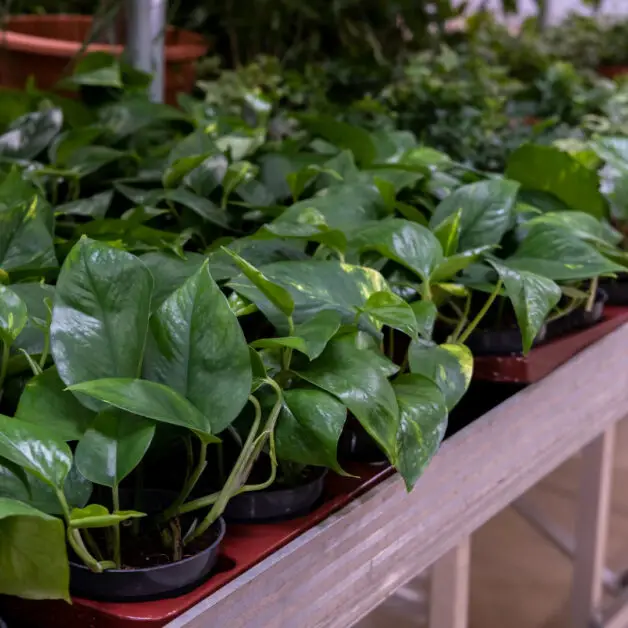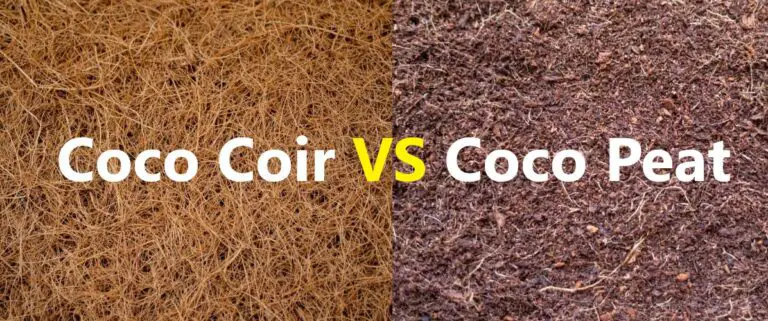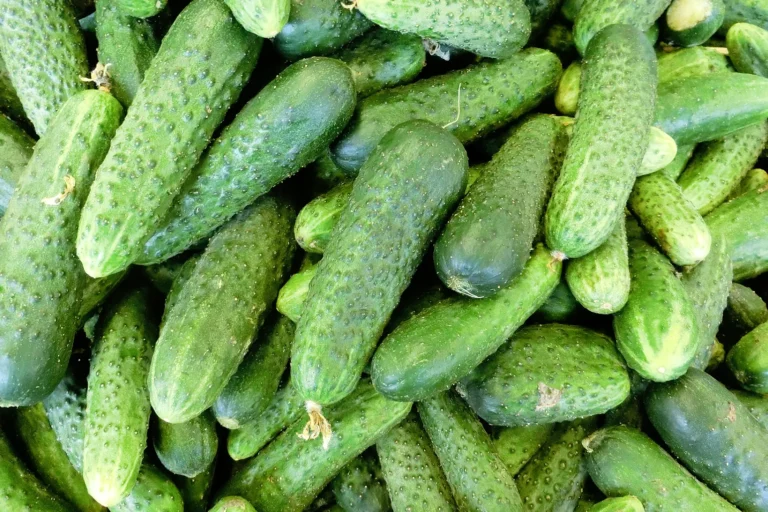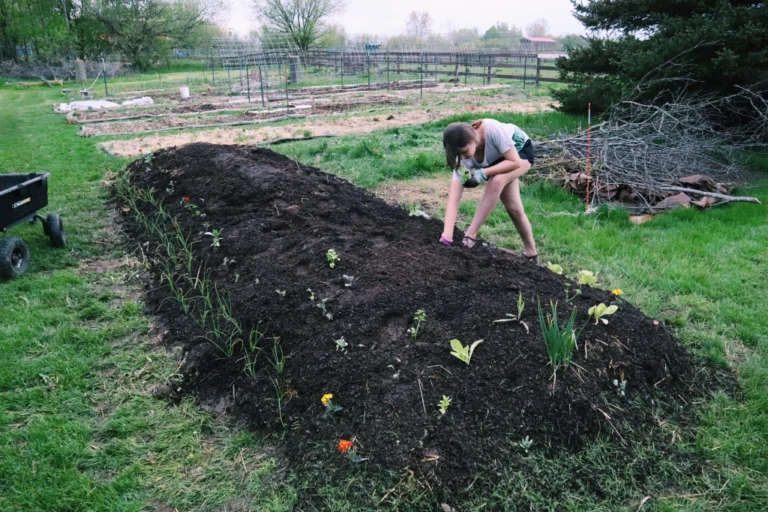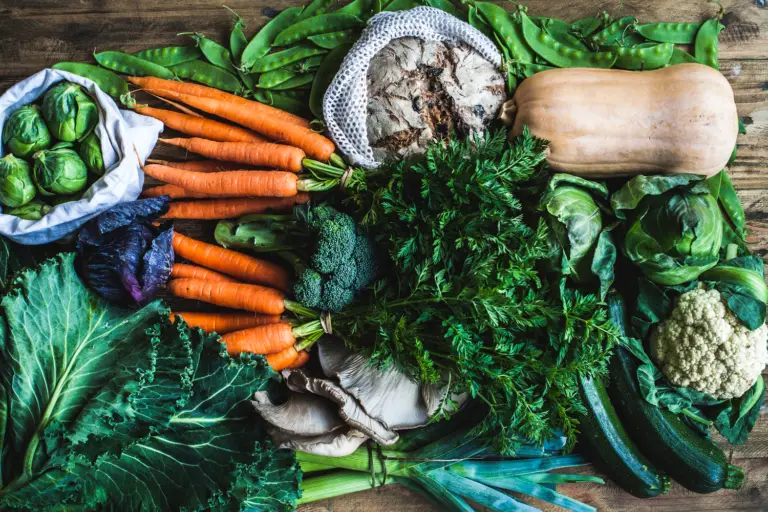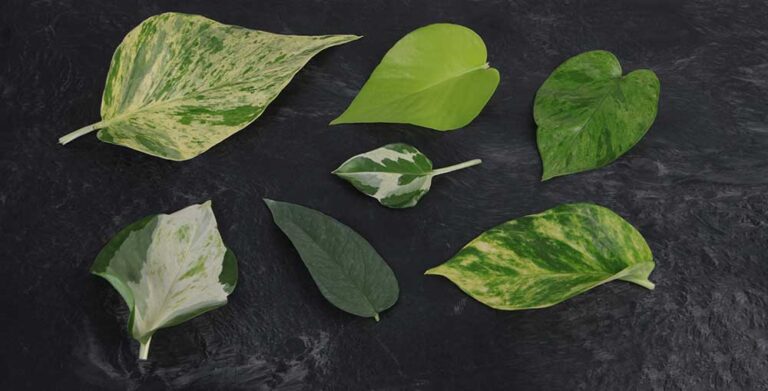Devil’s Ivy: How to Grow and Care for This Gorgeous Plant
Table of Contents
The Beauty of Devil’s Ivy: A Stunning Addition to Your Indoor Space
Devil’s Ivy, also known as Epipremnum aureum, is a truly captivating plant that can effortlessly enhance the beauty of any indoor space. Its lush foliage, vibrant green color, and cascading vines make it an ideal choice for those looking to add a touch of natural elegance to their home or office. Not only does Devil’s Ivy bring a sense of tranquility and serenity to any environment, but it also offers numerous benefits for its caretakers. As a low-maintenance and resilient plant, Devil’s Ivy requires minimal attention while still delivering maximum visual impact.
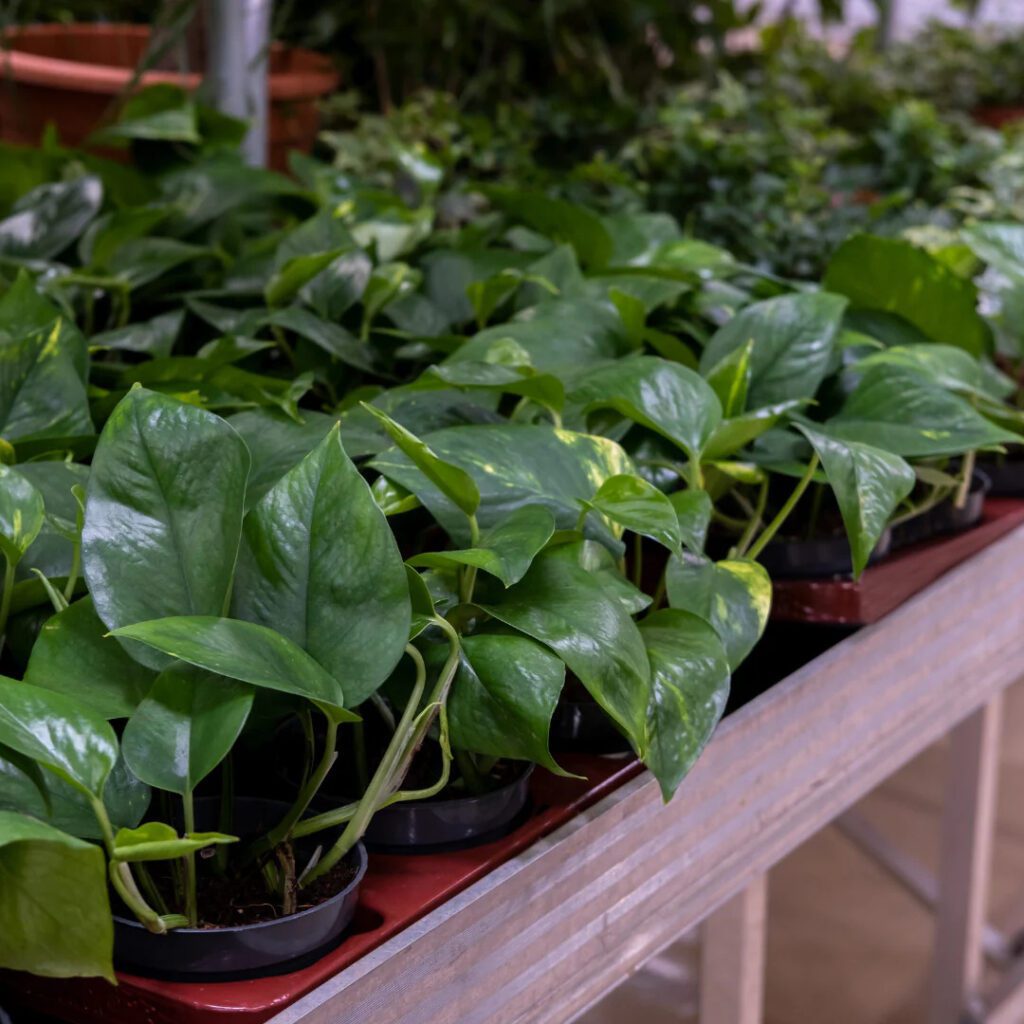
One of the most remarkable aspects of Devil’s Ivy is its ability to thrive in a wide range of light conditions. Whether you have a brightly lit room with direct sunlight or a cozy corner with minimal light, this resilient plant can adapt and flourish. Its versatility makes it an excellent choice for various spaces, including living rooms, bedrooms, offices, or even bathrooms. Furthermore, Devil’s Ivy not only adds aesthetic appeal but also purifies the air by removing harmful toxins. With its ability to cleanse and improve indoor air quality, this plant provides both beauty and health benefits, creating a truly harmonious atmosphere.
Enhancing the allure of Devil’s Ivy is its natural inclination to trail and climb. With its long, trailing vines, this plant can be creatively displayed in a multitude of ways. Whether cascading from a hanging basket, adorning a trellis, or delicately draping from a bookshelf, Devil’s Ivy adds a touch of elegance and whimsy to any space. The cascading vines can even be trained to climb walls or cascade down staircases, creating a striking visual display. Its versatility in styling and its ability to transform any area into a green oasis make Devil’s Ivy a truly stunning addition to your indoor space.
Understanding the Anatomy of Devil’s Ivy: Exploring Its Unique Features
Devil’s Ivy, scientifically known as Epipremnum aureum, is a plant that has captivated botany enthusiasts for its unique anatomy and striking features. With its long trailing vines adorned with heart-shaped leaves, it adds a touch of elegance and natural beauty to any indoor space. Understanding the anatomy of Devil’s Ivy is essential to appreciate its remarkable characteristics and ensure optimal care for this beloved houseplant.
One of the distinguishing features of Devil’s Ivy is its aerial roots. These roots have the extraordinary ability to cling to surfaces, allowing the plant to climb and trail effortlessly. This adaptation makes Devil’s Ivy a popular choice for hanging baskets or training on moss poles, creating visually stunning displays in gardens or indoor settings. Additionally, the heart-shaped leaves of Devil’s Ivy are a defining characteristic that showcases its allure. These glossy green leaves, often variegated with yellow or white markings, further enhance the plant’s ornamental value. The varying foliage patterns and colors make Devil’s Ivy an attractive focal point or complementary element when paired with other plants in your home or office environment.
Selecting the Perfect Location: Providing the Ideal Environment for Devil’s Ivy
Devil’s Ivy, also known as Epipremnum aureum, is a versatile and resilient plant that thrives in various environments. However, selecting the perfect location is crucial to provide the ideal environment for its growth and development. When choosing a spot for your Devil’s Ivy, consider the following factors to ensure its optimal health and beauty.
First and foremost, Devil’s Ivy requires bright, indirect light to flourish. While it can tolerate lower light conditions, placing it near a window where it can receive filtered sunlight will allow it to thrive. Avoid exposing your plant to direct sunlight, as it can scorch the delicate foliage and lead to leaf burn.
In addition to light, temperature plays a vital role in the growth of Devil’s Ivy. This plant prefers temperatures between 60-85°F (15-29°C), making it suitable for both indoor and outdoor cultivation in moderate climates. Avoid exposing Devil’s Ivy to extreme temperature fluctuations, drafts, or cold drafts from windows or doors, as this can stress the plant and hinder its growth.
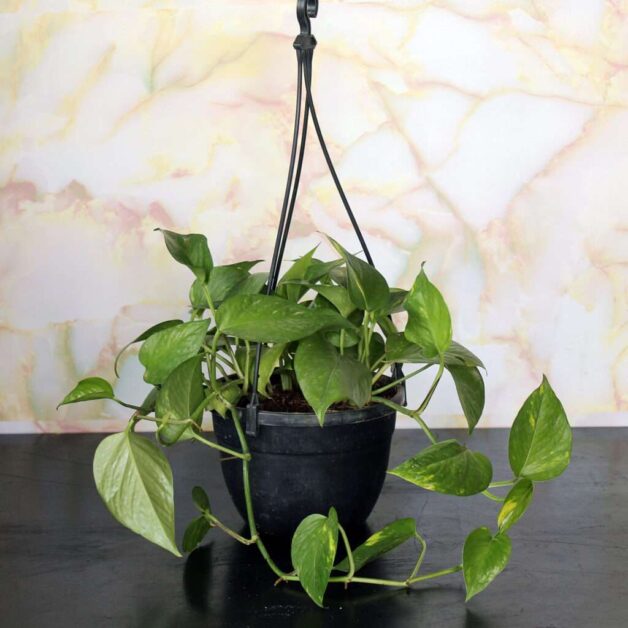
Humidity is another important factor to consider when selecting the perfect location for Devil’s Ivy. While it can adapt to a wide range of humidity levels, this plant thrives in moderate to high humidity environments. To increase humidity, you can place the pot on a tray filled with water and pebbles or use a humidifier nearby.
By carefully considering the lighting conditions, temperature, and humidity of your chosen location, you can provide the ideal environment for Devil’s Ivy. In the next sections, we will explore potting and repotting techniques, the right soil mix, watering dos and don’ts, and other crucial aspects of cultivating this stunning plant. Stay tuned for a comprehensive guide on nurturing Devil’s Ivy to ensure its healthy growth and vibrant foliage.
Potting and Repotting Techniques: Ensuring Proper Growth and Development
Potting and repotting are essential techniques for ensuring the proper growth and development of your Devil’s Ivy plant. When it comes to potting, selecting the right size and type of pot is crucial. A pot that is too small can restrict the root growth and lead to stunted development, while a pot that is too large can retain excess moisture and cause root rot. Opt for a pot that allows for proper drainage and has enough space for the plant to spread its roots comfortably.
This table outlines potting and repotting techniques for proper plant growth:
| Technique | Description |
|---|---|
| Choosing the Right Pot | Select a pot with proper drainage holes, appropriate size (allowing room for root growth), and suitable material (plastic, terracotta, etc.). |
| Quality Potting Mix | Use a well-draining and nutrient-rich potting mix suitable for the specific plant type or species. |
| Assessing Repotting Needs | Observe signs of root-bound plants or decreased growth to determine if repotting is necessary. |
| Repotting Timing | Repot during the plant’s active growing season (typically spring) to minimize stress and aid recovery. |
| Gently Remove Plant | Carefully loosen roots and remove the plant from its current pot, avoiding damage to the roots. |
| Inspecting Root Health | Check roots for signs of rot, pests, or compacted growth; trim damaged roots if necessary. |
| Placing in New Pot | Position the plant in the center of the new pot, adding fresh potting mix around the roots. |
| Watering After Repotting | Water thoroughly to settle the soil and encourage root establishment in the new pot. |
| Post-repotting Care | Provide adequate light, monitor for signs of stress, and avoid fertilizing immediately after repotting. |
During the repotting process, it is important to handle the delicate roots of Devil’s Ivy with care. Gently remove the plant from its current pot and inspect the roots. If you notice any decayed or blackened roots, trim them off to prevent the spread of diseases. Before placing the plant in its new pot, fill the bottom with a layer of fresh potting mix to provide adequate support and drainage. Then, carefully position the plant in the pot, ensuring that the roots are spread evenly. Fill the remaining space with the potting mix, gently firming it around the roots. Water the plant thoroughly after repotting to help it settle into its new environment.
The Right Soil Mix: Creating a Nutrient-rich Medium for Devil’s Ivy
Creating the right soil mix is crucial for the optimal growth and development of Devil’s Ivy. This popular indoor plant thrives in a nutrient-rich medium that provides it with the essential elements for its overall health. When it comes to selecting the perfect soil mix for Devil’s Ivy, it is essential to consider its natural habitat and growing requirements.

Devil’s Ivy, scientifically known as Epipremnum aureum, is native to the tropical rainforests of Southeast Asia. In its natural environment, it is an epiphytic plant, meaning it grows on other plants, using their support to reach sunlight. As a result, Devil’s Ivy has adapted to grow in a well-draining medium, rich in organic matter. To recreate these ideal conditions for your indoor plants, you should aim for a soil mix that provides both moisture retention and adequate drainage. This can be achieved by combining a high-quality potting soil with additional components, such as perlite or vermiculite, to enhance the soil’s structure and drainage capacity.
Watering Dos and Don’ts: Meeting the Moisture Needs of Your Plant
Watering is a crucial aspect of caring for Devil’s Ivy, as it directly affects the plant’s health and growth. Understanding the dos and don’ts of watering will ensure that you meet the moisture needs of your plant and promote optimal development.
One of the key dos is to water your Devil’s Ivy thoroughly but allow the soil to dry out slightly between waterings. This helps prevent overwatering, which can lead to root rot and other issues. When watering, make sure to saturate the soil evenly, ensuring that water reaches the roots. You can use a finger or a moisture meter to check the moisture level in the soil, making sure not to underwater or overwater your Devil’s Ivy.
On the other hand, one of the don’ts is to avoid letting your Devil’s Ivy sit in standing water. This can also lead to root rot and fungal diseases. Ensure that your pot has proper drainage holes, allowing excess water to escape. If you notice water pooling at the bottom of the pot, consider using a saucer or tray to catch the excess and empty it out promptly. By following these watering dos and don’ts, you will create a favorable environment for your Devil’s Ivy to thrive.
Sunlight Requirements: Finding the Balance for Optimal Growth
When it comes to the sunlight requirements of Devil’s Ivy, finding the right balance is crucial for optimal growth. As a versatile and adaptable houseplant, Devil’s Ivy can tolerate a wide range of light conditions, but it thrives best in indirect or filtered sunlight. Placing your plant near a north or east-facing window is ideal, as it provides bright, indirect light without the intensity of direct sunlight.
While Devil’s Ivy can tolerate lower light conditions, it may result in slower growth and less vibrant foliage. On the other hand, exposing the plant to direct sunlight for extended periods can lead to scorched leaves and overall stress. It’s important to strike a balance by observing the sunlight patterns in your home and adjusting the position of your Devil’s Ivy accordingly. Regularly rotating the plant can help ensure all sides receive adequate light, promoting even growth and lush foliage. By finding the optimal balance of sunlight, you can create the perfect environment for your Devil’s Ivy to thrive.
Fertilizing Guidelines: Nourishing Devil’s Ivy to Promote Lush Foliage
Fertilizing is an essential aspect of nurturing Devil’s Ivy and promoting its lush foliage. By providing the right nutrients at the right time, you can enhance the growth and overall health of your plant. One key factor to consider is the type of fertilizer to use. Opt for a balanced, water-soluble fertilizer with an NPK ratio of 20-20-20 or similar. This will ensure a good balance of nitrogen, phosphorus, and potassium, which are vital for the plant’s growth and development. Additionally, choose a fertilizer that contains micronutrients like iron, manganese, and zinc, as these elements are necessary for maintaining healthy, vibrant foliage.
Timing is also crucial when it comes to fertilizing Devil’s Ivy. During the active growing season, which typically spans from spring to summer, it is recommended to fertilize every two weeks. Dilute the fertilizer according to the instructions provided by the manufacturer and apply it to the soil around the base of the plant. Be cautious not to overfeed, as excessive fertilizer can lead to burn or cause harm to the plant. During the dormant period in winter, reduce the frequency of fertilization to once every six to eight weeks. Adjusting the fertilization schedule accordingly will ensure that your Devil’s Ivy receives the necessary nutrients without being overwhelmed, allowing it to thrive with lush, healthy foliage.
Pruning and Trimming Tips: Maintaining a Well-groomed and Healthy Plant
Maintaining a well-groomed and healthy Devil’s Ivy plant requires regular pruning and trimming. By following these expert tips, you can ensure that your plant thrives and remains visually appealing.
First, it’s important to understand the purpose of pruning and trimming. Regular pruning helps to control the growth of the plant and promote bushier, more compact foliage. It also helps to remove any dead or damaged leaves, ensuring that the plant stays healthy and disease-free.
When pruning Devil’s Ivy, always use sharp and clean pruning shears to make clean cuts. Start by trimming any long and leggy vines to encourage a more compact growth habit. Aim to trim back the vines by about one-third of their length, cutting just above a leaf node to encourage new growth.
Additionally, remove any yellow or brown leaves as they can be a sign of nutrient deficiencies or pest infestations. By removing these leaves promptly, you can prevent the spread of any potential issues and keep your Devil’s Ivy looking its best.
Remember, pruning and trimming should be done strategically and with care. Avoid excessive pruning, as this can weaken the plant and hinder its growth. Regularly check for new growth and adjust your pruning routine accordingly. By maintaining a well-groomed and healthy Devil’s Ivy through regular pruning and trimming, you can enjoy a beautiful and thriving indoor plant.
Still Confused? We have a perfect video solution for you!
Propagation Methods: Expanding Your Devil’s Ivy Collection
Propagation is an exciting way to expand your collection of Devil’s Ivy and create more lush greenery in your indoor space. Devil’s Ivy, also known as Epipremnum aureum, is a versatile plant that can be propagated through various methods, including stem cuttings and water propagation.
Stem cuttings are a popular and effective way to propagate Devil’s Ivy. To do this, simply select a healthy stem from the parent plant, making sure it has at least two to three leaves. Using clean, sharp pruning shears, cut the stem just below a node, which is where the leaf attaches to the stem. Remove any leaves from the lower part of the cutting, leaving only a few at the top. This will help reduce moisture loss and encourage the growth of new roots. Place the cutting in a container filled with a well-draining potting mix, and keep it in a warm and humid environment. With proper care and regular watering, roots will begin to form within a few weeks, signaling successful propagation.
Water propagation is another simple yet effective method for propagating Devil’s Ivy. Start by selecting a healthy stem and submerging the lower part in a jar or container filled with water. Make sure to remove any leaves that would be submerged in water as this can lead to rotting. Place the jar in a well-lit area, but avoid direct sunlight as it can cause algae growth. Change the water every few days to keep it fresh and prevent the growth of bacteria. After a few weeks, roots will start to develop, indicating that the cutting is ready to be potted in soil.
By utilizing these propagation methods, you can expand your Devil’s Ivy collection and create a stunning display of greenery in your indoor space. Whether you choose stem cuttings or water propagation, the key is to provide your newly propagated plants with the right conditions and care to ensure their successful growth and development. With a little patience and attention to detail, you’ll soon have a thriving collection of Devil’s Ivy plants to enjoy.
Common Pests and Diseases: Identifying and Treating Potential Issues
Common Pests and Diseases: Identifying and Treating Potential Issues
Keeping your Devil’s Ivy healthy and vibrant requires attention to potential pests and diseases that may attack your plant. While Devil’s Ivy is generally resilient, it is not immune to certain issues that can affect its growth. By familiarizing yourself with common pests and diseases, you can identify and address any problems promptly to ensure the continued health and beauty of your plant.
One of the pests that may pose a threat to your Devil’s Ivy is the mealybug. These small, white insects are often found in clusters on the leaves or stems of your plant. Mealybugs feed on the sap within the plant, leading to stunted growth, yellowing leaves, and a weakened overall appearance. To address this issue, you can manually remove the mealybugs by wiping them off with a cotton swab dipped in alcohol or applying insecticidal soap to the affected areas. Regularly inspecting your Devil’s Ivy and taking swift action against mealybugs will help prevent further damage and maintain the plant’s vitality.
Another common problem for Devil’s Ivy is root rot, which occurs when the roots are consistently exposed to excessive moisture. If the soil is not well-draining or if you overwater your plant, it can lead to the development of root rot. This condition manifests through yellowing, wilting leaves, a foul odor emanating from the soil, and black, mushy roots. To address root rot, it is essential to first improve drainage by repotting your Devil’s Ivy in a well-draining soil mix. Additionally, adjust your watering schedule to ensure the soil is moist but not overly saturated. Trimming away any affected roots and providing proper care moving forward will help your Devil’s Ivy recover from root rot and thrive once again.
By being proactive in identifying and treating common pests and diseases that may affect your Devil’s Ivy, you can maintain a healthy and thriving indoor plant. Regular inspections, prompt action, and proper care practices all contribute to the long-term beauty and vitality of this stunning addition to your indoor space.
Troubleshooting Yellow Leaves: Understanding and Addressing Leaf Discoloration
Yellow leaves on Devil’s Ivy can be a cause for concern, as they indicate an underlying issue that needs to be addressed. One common reason for leaf discoloration is overwatering. While Devil’s Ivy prefers moist soil, excessive watering can lead to root rot, which manifests as yellowing leaves. To prevent this, it’s important to ensure proper drainage by using a well-draining potting mix and allowing the soil to dry out slightly between waterings. Additionally, make sure to adjust the watering frequency according to the plant’s needs, taking into account factors such as humidity levels and the size of the pot.
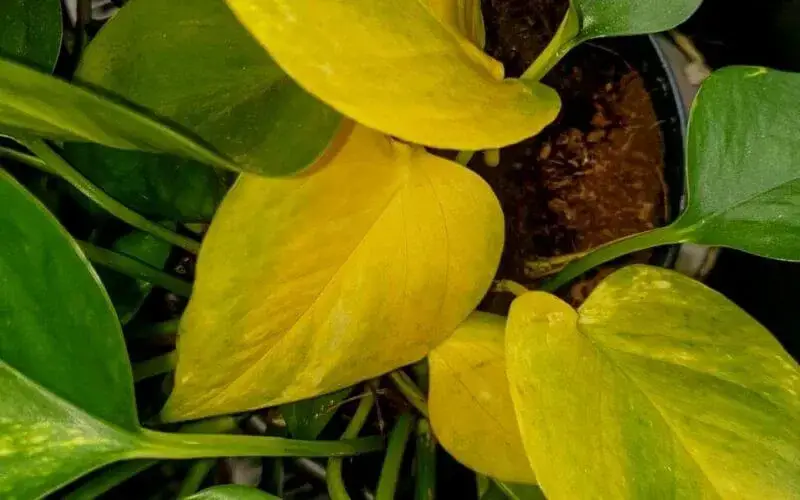
Another possible cause of yellow leaves is nutrient deficiency. Devil’s Ivy is a fast-growing plant that requires regular feeding to maintain its vibrant foliage. A lack of essential nutrients, such as nitrogen, magnesium, or iron, can result in yellowing leaves. To address this issue, consider using a balanced liquid fertilizer specifically formulated for houseplants. Follow the manufacturer’s instructions for application rates and frequency, and be careful not to overfertilize, as this can also lead to leaf discoloration. Regularly assessing the soil pH and adjusting it if necessary can further ensure optimal nutrient uptake by the plant.
• Overwatering can cause yellow leaves on Devil’s Ivy due to root rot
• Ensure proper drainage with well-draining potting mix and allow soil to slightly dry between waterings
• Adjust watering frequency based on plant’s needs, humidity levels, and pot size
• Nutrient deficiency is another possible cause of yellow leaves
• Devil’s Ivy requires regular feeding with essential nutrients like nitrogen, magnesium, or iron
• Use a balanced liquid fertilizer formulated for houseplants according to manufacturer’s instructions
• Avoid overfertilizing as it can also lead to leaf discoloration
• Regularly assess soil pH and adjust if necessary for optimal nutrient uptake by the plant.
Enhancing Devil’s Ivy’s Appearance: Creative Display Ideas and Plant Pairings
Devil’s Ivy, with its cascading vines and vibrant green leaves, is a stunning addition to any indoor space. Aside from its natural allure, there are creative ways to enhance its appearance and create visually captivating displays. By incorporating plant pairings and considering unique display ideas, you can showcase the beauty of Devil’s Ivy in a more captivating and visually appealing manner.
One creative display idea for Devil’s Ivy is to plant it in a hanging basket or place it on a high shelf, allowing its vines to gracefully trail down. This not only adds height and dimension to your space but also showcases the cascading nature of the plant. To further enhance its appearance, you can pair Devil’s Ivy with other trailing plants, such as String of Pearls or Golden Pothos. The contrasting textures and colors of these plants create a visually interesting composition that adds depth and visual interest to your indoor display.
Another creative way to enhance Devil’s Ivy’s appearance is to train its vines to climb a trellis or moss pole. This vertical arrangement not only adds visual interest but also allows for the plant to grow upwards, providing a striking focal point in your space. You can also experiment with different shapes and forms for the trellis, such as a pyramid or a circle, to create a unique and eye-catching display. Additionally, pairing Devil’s Ivy with other plants that have varying leaf shapes, such as a Swiss Cheese Plant or a Monstera, can add intrigue and complexity to the overall display.
In conclusion, enhancing Devil’s Ivy’s appearance through creative display ideas and plant pairings can elevate its beauty and create a visually captivating indoor space. Whether it’s by utilizing hanging baskets and trailing plants or incorporating vertical arrangements with trellises, these ideas allow you to showcase Devil’s Ivy’s natural charm in new and exciting ways. Experiment with different combinations and designs to find a display that perfectly suits your style and preferences.
Long-term Care: Sustaining the Health and Beauty of Devil’s Ivy Over Time
Long-term care is crucial for sustaining the health and beauty of Devil’s Ivy (Epipremnum aureum) over time. This resilient plant has the ability to thrive in various conditions, but to ensure its long-term success, a few key considerations are essential.
First and foremost, maintaining a consistent watering regimen is vital. Devil’s Ivy prefers slightly moist soil, but overwatering can lead to root rot, while underwatering can cause the leaves to wilt and turn yellow. Finding the right balance is crucial for promoting optimal growth and preventing water-related issues. Considerations such as the plant’s size, pot size, and environmental humidity levels should guide your watering practices. Additionally, using a well-draining soil mix can help prevent waterlogging, allowing the roots to breathe and absorb nutrients effectively.
Still stuck somewhere? Here’s the perfect care guide for you!
Another aspect of long-term care involves providing adequate lighting conditions for Devil’s Ivy. This versatile plant can tolerate a range of light intensities, from low to bright indirect light. However, it should be noted that insufficient light can lead to leggy growth and pale leaves, while excessive light may scorch the foliage. Finding the right balance and location within your indoor space is crucial for maintaining the plant’s vibrant and lush appearance over time.
How often should I repot my Devil’s Ivy?
Devil’s Ivy should be repotted every 1-2 years or when the roots become overcrowded in its current pot.
Can Devil’s Ivy tolerate direct sunlight?
Devil’s Ivy prefers bright, indirect sunlight, but it can tolerate some direct sunlight. However, excessive direct sunlight can lead to leaf burning.
How often should I fertilize my Devil’s Ivy?
It is recommended to fertilize Devil’s Ivy every 2-4 weeks during the growing season (spring and summer) with a balanced liquid fertilizer diluted to half strength.
How can I propagate Devil’s Ivy?
Devil’s Ivy can be easily propagated through stem cuttings. Simply cut a healthy stem below a node, remove the lower leaves, and place it in water or moist soil to root.
What are some common pests that can affect Devil’s Ivy?
Common pests that may affect Devil’s Ivy include spider mites, mealybugs, and aphids. Regularly inspect your plant for any signs of infestation and take appropriate measures if needed.
Why are the leaves of my Devil’s Ivy turning yellow?
Yellow leaves on Devil’s Ivy can indicate overwatering, underwatering, or nutrient deficiencies. It is important to assess the watering routine and check for any nutrient imbalances to address the issue.
How can I enhance the appearance of my Devil’s Ivy?
You can enhance the appearance of Devil’s Ivy by creatively displaying it in hanging baskets, wall-mounted planters, or terrariums. Additionally, pairing it with other houseplants with complementary colors and textures can create an appealing arrangement.

Pallavi Gupta is a burgeoning writer at SouthElMonteHydroponics, blending her passion for data analysis with a keen interest in biotechnology. Currently pursuing a Bachelor’s in Biotechnology at Amity University, Pallavi delves into the intricacies of life sciences while gaining hands-on experience in the exciting world of data analysis. Her unique background provides a fresh perspective on hydroponic farming, as she explores the intersection of biotechnology and sustainable agriculture. Through her writing, Pallavi aims to bridge the gap between data-driven insights and innovative farming practices, inspiring others to harness technology for a greener future.

